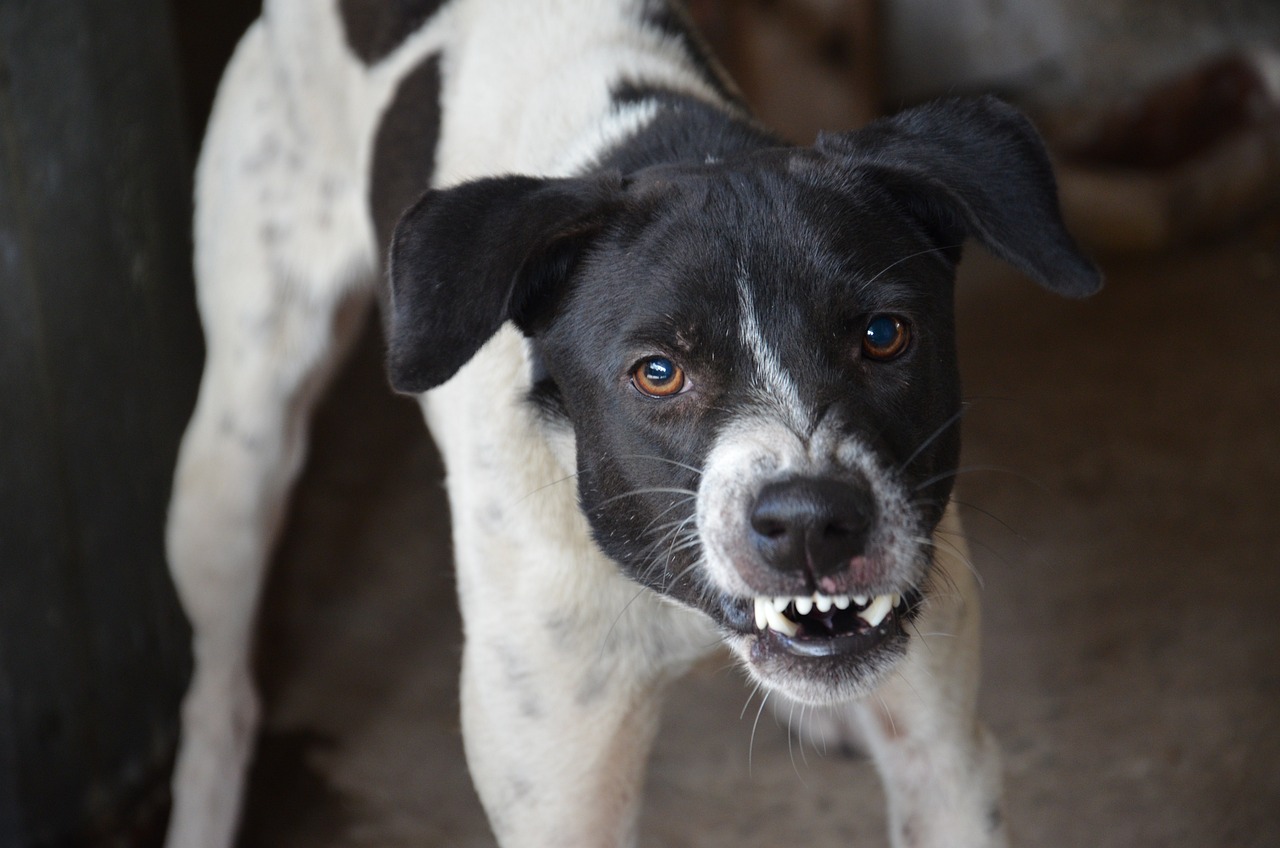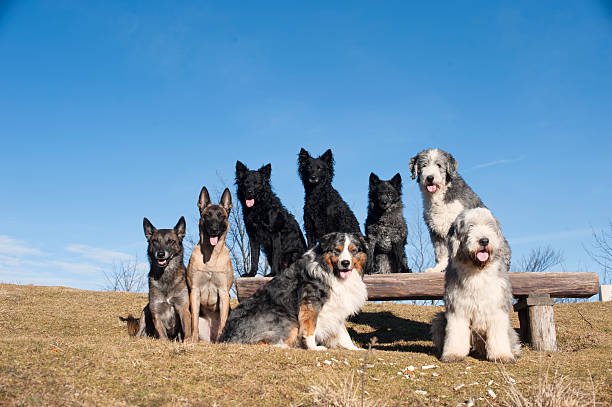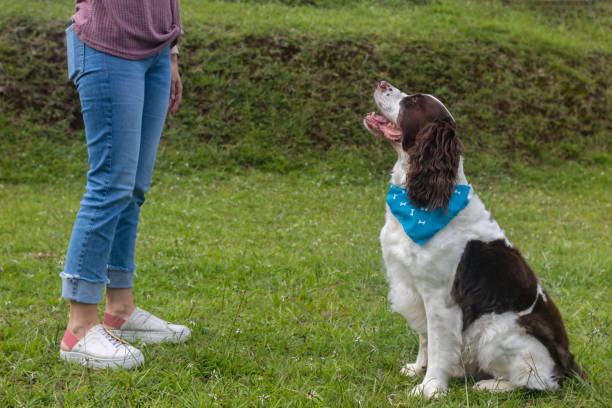Creating a relaxed environment for your dog is an important part of its behaviour. Facilitating your dog’s training can assist them in mastering the concept of relaxation. However, it’s also crucial to provide appropriate circumstances and stimulating activities to keep them occupied and motivated.
The Importance of Training Sessions
It can be frustrating when your dog doesn’t seem to listen to you, but when it is reactive, their behaviour can be a lot more than frustrating—it can be dangerous. Many people think that all they need is to train their dog not to bark or lunge at people, and they’ll be good to go, but that’s not always the case.
It is important to train them because if it is not trained, they may resort to barking, lunging, and even biting when they see another dog. This can lead to dangerous situations for them and the other dog. Training the dog to react positively to other dogs is important to prevent this.
Reactive dogs pose a significant risk to themselves and the public, as they may act aggressively without warning. Dog training is essential to ensure their safety and those around them.
A well-trained reactive dog will respond to commands such as “sit” or “stay” even when agitated, allowing their owner to safely manage them in public. They can learn to control their impulses and remain calm in stressful situations through training.
The Basics of Training a Reactive Dog
Dogs reacting to people, animals, or other environmental stimuli can be challenging to train. However, with patience and understanding, it is possible to help these dogs become more comfortable in the world around them.
The first step is to understand what may be causing dog reactivity and work to address that issue. If a dog is fearful or anxious, training should build confidence and reward good behaviour.
If the problem is aggression, dog owners must be especially vigilant about avoiding situations that could lead to a fight. Most reactive dogs can be taught to behave appropriately in public places with time and patience.
Dog Training: Reward-Based Training
You know traditional training methods don’t work with a reactive dog. Dogs that bark and lunge at other dogs or people are often labelled as “bad” and punished with choke chains or scolding. This worsens the problem because the dog becomes anxious and stressed, leading to more reactivity.
Fortunately, reward-based training is a better way to train. With this method, you get positive reinforcement for good behaviour and ignore bad behaviour.
This can be done with treats, toys, petting, or verbal praise. Over time, your dog will learn that behaving well earns them rewards while behaving badly gets them nothing. As a result, they will be less likely to react in stressful situations.


We do not want to train dogs to act aggressively, so we should make the environment safe for everyone. The first step is to reduce the stress of a dog’s life. This can be done through training and management but would be more difficult without treats.
We also need to teach dogs to behave well without being rewarded. This can be done by using positive reinforcement to reward desired behaviour and ignoring unwanted behaviour. You should also praise calm behaviour and ignore aggressive behaviour in training situations.
When using a leash, you should always be aware of your dog’s body language and ability to move. You can avoid a dog pulling by taking the leash and walking your dog on its side or back, which will help him understand that it is not allowed to pull.
As a dog owner, if your dog, or any other dog, is aggressive towards other dogs, you should always walk your dog in dog parks on a loose leash and keep it close to you in all situations.
You can help your puppy’s socialisation by taking it to an experienced dog trainer. Be patient with puppy training. Most dogs will not be able to understand what you are saying at the beginning, but as they grow older and has more experience, they will become more receptive to your instructions.
Dog Training: Desensitisation and Counterconditioning
Living with a reactive dog can be frustrating and overwhelming. Dogs that are reactive to other dogs, people, or objects can be unpredictable and dangerous. However, there are ways to help them become more manageable. One of the most effective methods is desensitisation and counterconditioning.
Desensitisation gradually exposes the dog to the trigger and then provides positive reinforcement when calm. This can be done using different methods, such as classical conditioning, operant conditioning, and applied behaviour analysis.
Counterconditioning trains the dog to associate a positive response with an unpleasant stimulus. It can be accomplished using classical conditioning or operant conditioning.
Both desensitisation and counterconditioning are useful for modifying your dog’s issues, but they have some important differences. Desensitisation can condition the dog to respond positively to stimuli, but it may not allow him to overcome his natural aversion.
Counterconditioning is used to modify behaviour by training to associate a negative response with unpleasant stimuli. Counterconditioning can be used to modify behaviour in two ways.


First, it is used to condition the dog’s response to a stimulus that he finds unpleasant or dangerous. For example, if a pooch is frightened by fireworks, it will be necessary to initially condition him to respond positively to other stimuli before counterconditioning can be used.
Second, counterconditioning can modify behaviour in situations where the dog’s response may be dangerous for him or others.
The dog’s response to a stimulus can be changed by providing a neutral or positive stimulus without the negative stimulus. For example, a dog who is afraid of thunderstorms will be able to be conditioned to respond positively to other stimuli when presented with a loud noise in the absence of the storm.
Conditions can also be used to train animals with different species or breeds. It is important to note that counterconditioning may only occur after acquiring the conditioned response. Counterconditioning may be used to modify the performance of the behaviour, but it does not change the underlying stimulus-response association.
Tips for Living with a Reactive Dog
Living with them can be difficult. They may bark, lunge, and growl at strange dogs or people, even if they are walking by. If your pooch has reactive dog behaviour, here are some tips to help make life easier for you.
Don’t take it personally— It is important to realise that they are not trying to hurt you or other people, just that he has a strong association with the trigger and something bad will happen.
Reduce the trigger condition—This is important and often hard to do. If you can decrease the number of times your dog reacts, he will quickly learn to not react. Be gentle.
Be consistent—Most reactive dogs fear you will hurt them, so consistency is important when training. This will make them feel safe, and eventually, they will learn that you will not hurt them.
Be patient—They need to feel safe and comfortable while learning. If you are not willing to be patient, it may take longer than it should. If he is very reactive, consider getting professional help.


Reward good behaviour—Try to reward good behaviour. This will make him more likely to want to do the same thing again. It also encourages positive behaviour in general.
Ignore bad behaviour—Try to ignore the reactive behaviour and reward good behaviour. This will make him feel like he is doing something wrong and more likely that he won’t do it again.
Seek help if needed—If you have tried everything and your dog still has problems with biting, aggression or other behavioural issues, get help. Consider visiting a veterinary behaviourist to help you work on the problem. Offer to pay for the session fees upfront to avoid surprises later.
Helping a Dog Find Calm
There are many reasons why a dog might become reactive in certain situations. Maybe they were not socialised enough as puppies or had a bad experience with another dog. There are ways to help them find calm and overcome their fears.
One way is to start working on obedience commands. This will help them focus on you instead of whatever is making them anxious. You can also use positive reinforcement when your dog behaves appropriately in a challenging situation. This could mean treats, petting, or verbal praise. Finally, make sure you provide them with plenty of exercise and stimulation. A tired pup is less likely to become agitated.
Final Thought
Training a reactive dog can help you and your pet live a more relaxed life. Reactive dogs typically have difficulty relaxing and staying calm in certain situations. You can help your puppy learn how to calm down in stressful situations by working on basic obedience commands and training exercises.



